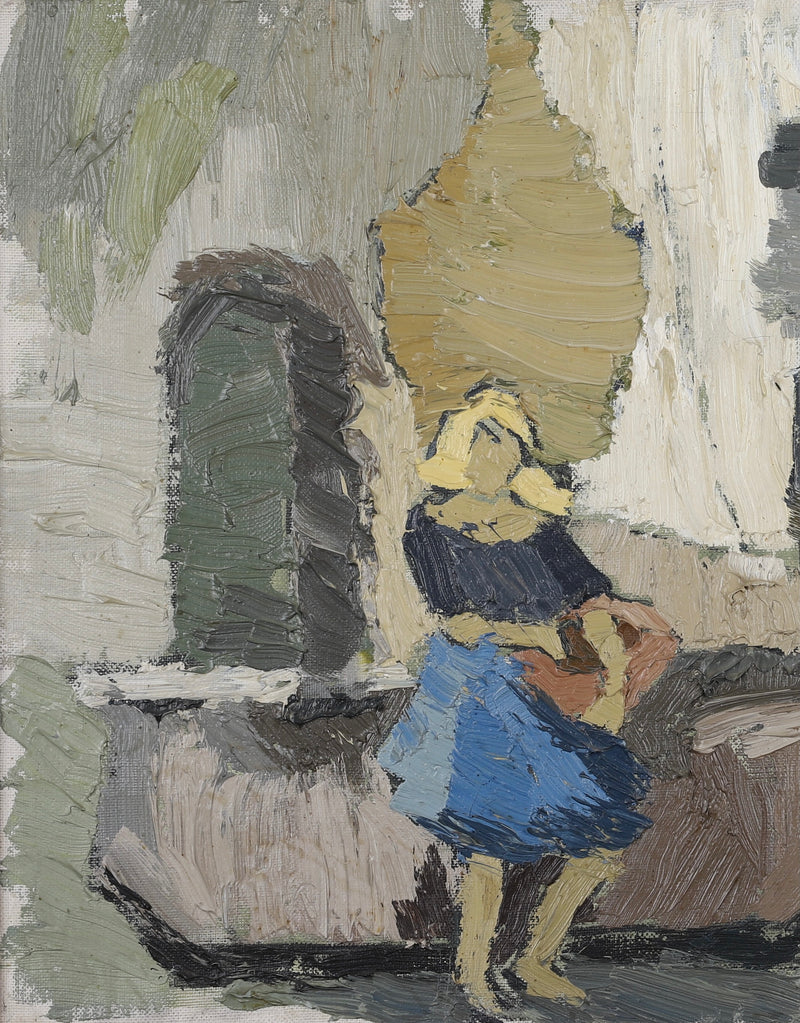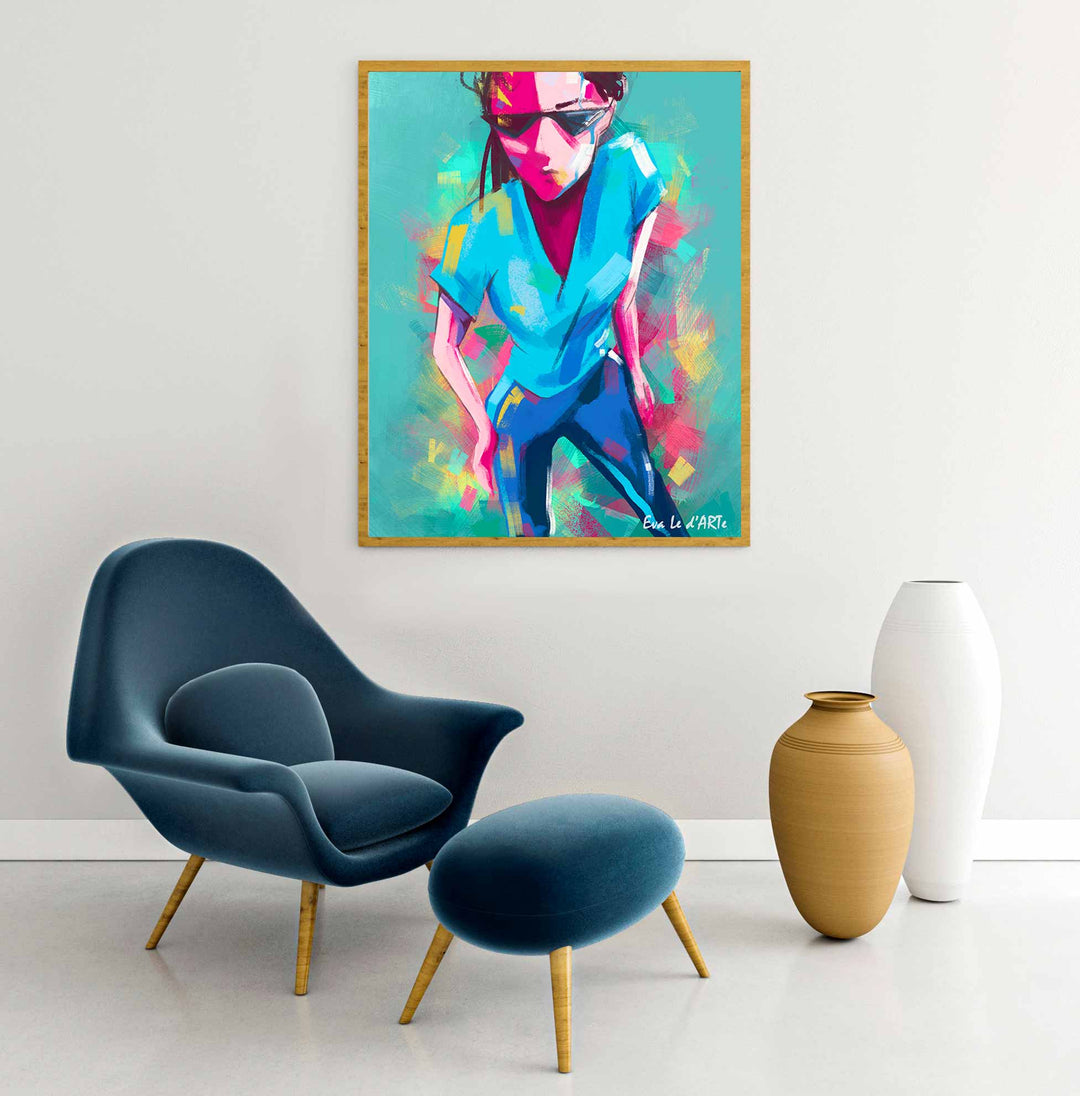The Development of Figurative Oil Paint: Recognizing Its Historical Significance and Modern Interpretations
The development of figurative oil painting offers as a compelling lens via which to examine the interaction between creative expression and historic context. Contemporary artists, drawing from this rich heritage, are now reinterpreting the human number in methods that test traditional stories.
Beginnings of Figurative Oil Painting
The beginnings of figurative oil paint can be mapped back to the early Renaissance in Europe, especially in the 15th century. This period marked a significant separation from the flat depictions and inflexible types characteristic of medieval art. Artists began to discover naturalism, stressing the human figure and its emotional expression. The development of oil paint enabled greater depth of shade and detail, enhancing the realism and vibrancy of their job.

In this transformative era, numbers were frequently illustrated within contextually abundant settings, showcasing not just their physical characteristics but additionally their mental states. Pioneers such as Jan van Eyck and Titian utilized the tool's convenience, employing layering strategies to achieve luminosity and texture. This technology promoted the representation of elaborate fabrics and the nuances of complexion, contributing to the growth of portraiture and narrative scenes.
Moreover, the Renaissance emphasis on humanism fostered a gratitude for individuality, which in turn affected musicians to develop more vibrant and relatable figures - figurative oil painting. Consequently, figurative oil painting became a powerful automobile for narration and psychological interaction, laying the groundwork for future creative movements and designs
Key Historical Motions
Substantial historical movements have shaped the advancement of metaphorical oil painting, each contributing one-of-a-kind philosophies and methods that broadened the tool's opportunities. The Renaissance noted a zero hour, highlighting realistic look and the human form, with musicians like Leonardo da Vinci and Michelangelo pressing the borders of physiological precision and perspective. Following this, the Baroque age brought significant contrasts of light and darkness, exhibited by Caravaggio, that infused spiritual themes with extreme emotionality.
The 19th century presented Romanticism and Realism, where musicians such as Delacroix and Courbet challenged classic suitables, concentrating on specific expression and day-to-day life. The advent of Impressionism even more reinvented the medium by emphasizing the results of light and color, resulting in a separation from standard representation.
In the early 20th century, movements like Expressionism and Cubism redefined metaphorical painting through abstraction and the exploration of psychological deepness. Each of these activities not only reflected the social changes of their times but likewise laid the foundation for modern analyses. The interplay between these historical motions has produced an abundant tapestry of philosophies and styles, influencing modern artists in their pursuit of capturing the human experience on canvas.
Methods and Materials Development

Throughout the Baroque duration, techniques such as chiaroscuro and sfumato arised, improving the psychological resonance of metaphorical structures. Musicians began to experiment with lusters and impasto, manipulating appearance and luminosity. By the 19th century, technologies like the usage of pre-mixed paints in tubes revolutionized availability, allowing musicians to repaint en plein air and catch the short lived effects of light.
The 20th century experienced the introduction of synthetic pigments and tools, which expanded the combination and altered the consistency of oil paints. In addition, the exploration of brand-new application strategies, such as combination blades and brushes of differing stiffness, additional varied artistic expression. Collectively, these developments mirror the evolving connection in between products, techniques, and the artistic vision intrinsic in metaphorical oil paint.

Contemporary Analyses
Contemporary analyses of metaphorical oil paint mirror a vibrant discussion in between practice and technology, where musicians test developed standards and check out varied styles. This development materializes in different methods, as contemporary artists blend classical techniques with modern principles, often addressing social, political, and individual stories.
Lots of professionals draw motivation from historical jobs, yet they instill their items with contemporary perspectives, utilizing the human kind as an automobile for discourse on identification, culture, and gender. Artists increasingly experiment with abstraction, distortion, and combined media, which permits a wider interpretation of the number and its context.
Furthermore, making use of dazzling shade palettes and unconventional make-ups typically serves to interfere with standard seeing experiences, prompting crucial engagement from audiences. This shift in focus extends beyond aesthetic appeals; it shows an expanding understanding of the complexities of human experience in an interconnected globe.
As figurative oil paint view publisher site remains to advance, it continues to be an important tool for exploring the subtleties of contemporary life, personifying both a regard for heritage and a commitment to modern thought. The result is an abundant tapestry of expression that resonates with the intricacies of the modern human problem.
Effect On Modern Art
The impact of figurative oil paint on modern-day art is profound, as it has continuously motivated a myriad of artistic motions and methods throughout the 21st and 20th centuries. From Expressionism to Surrealism and past, the exploration of the human figure has stayed a main motif, allowing artists to convey complicated feelings and stories. This focus on metaphorical depiction has led to a re-examination of conventional methods, leading to cutting-edge strategies that mix realism with abstraction.
Moreover, contemporary artists have embraced figurative oil painting as a way to deal with social and political problems, using the medium to challenge perceptions of sex, identification, and culture. The resurgence of navigate here interest in figurative job in current years mirrors a hoping for connection in a progressively digital world, where human experience and feeling are vital.
Furthermore, the dialogue between figurative oil paint and contemporary art is obvious in the works of musicians such as Kehinde Wiley and Jenny Saville, that draw on historical references while instilling their items with contemporary relevance. Inevitably, metaphorical oil painting proceeds to form and redefine modern artistic expression, emphasizing its enduring significance in the art globe.
Final Thought
The development of figurative oil paint underscores best site its historic relevance and versatility throughout different imaginative motions. From the naturalism of the Renaissance to the emotive expressions of the Baroque and the cutting-edge techniques of modernity, this medium has actually constantly changed. Contemporary interpretations mirror unusual structures and vibrant shades, fostering important engagement with political and social themes. Inevitably, figurative oil paint remains a crucial tool for checking out the human experience, reverberating profoundly in today's electronic landscape.
The development of metaphorical oil painting serves as a compelling lens via which to examine the interplay between creative expression and historic context.Significant historical motions have actually formed the advancement of figurative oil painting, each contributing special ideologies and methods that increased the medium's possibilities.As historical motions shaped the trajectory of metaphorical oil paint, the products and strategies used by artists have also undergone considerable changes. figurative oil painting.The effect of metaphorical oil paint on contemporary art is extensive, as it has continuously influenced a myriad of creative motions and methods throughout the 21st and 20th centuries.The development of figurative oil painting underscores its historical significance and adaptability across numerous creative activities